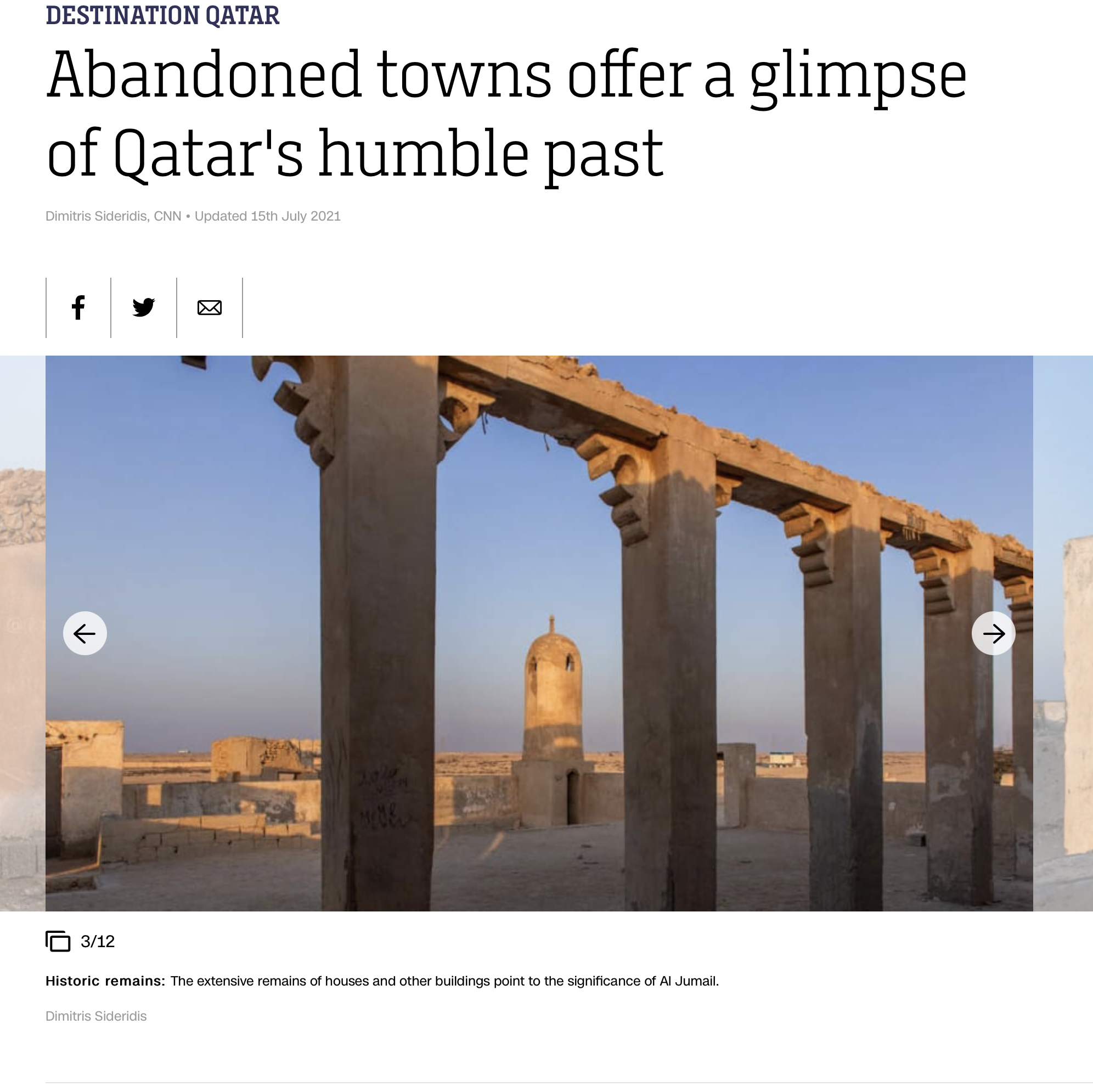Doha (CNN) — Past the small arched door, a narrow spiral stair leads up to the top of the windswept minaret, still standing tall even as almost everything around it has crumbled.
Inside the tiny room atop the circular shaft, four little windows open up to the long-abandoned surroundings. On the one side, the tumbling ruins of old fishermen’s houses — most without a roof, doors or windows — stretch along the turquoise coastline. On the other, the Qatari desert.
This is Al Jumail, one of several forsaken villages dotting the northwest coast of Qatar. The remnants of these little-known “ghost towns” offer a fascinating glimpse of life in ages past, before Qatar’s spectacular oil- and gas-fueled economic boom began pulling people away from its small, traditional villages and into its expanding modern capital of Doha.
While not much is known about its origins, Al Jumail dates back to the second half of the 19th century, according to Qatar Museums. The extensive remains of houses and other buildings point to the significance of the village, one of the oldest settlements in the area that remained populated well into the previous century.
